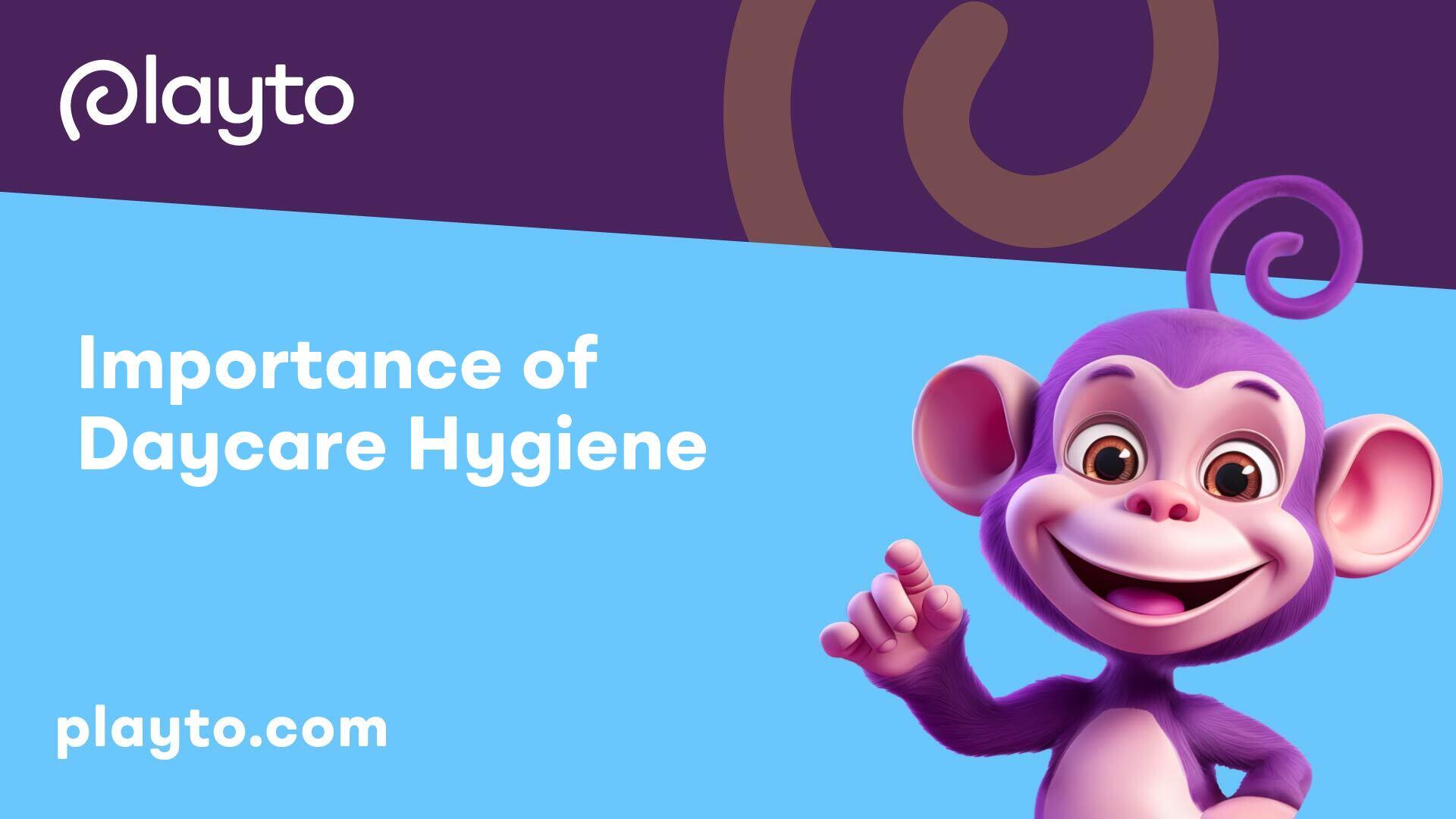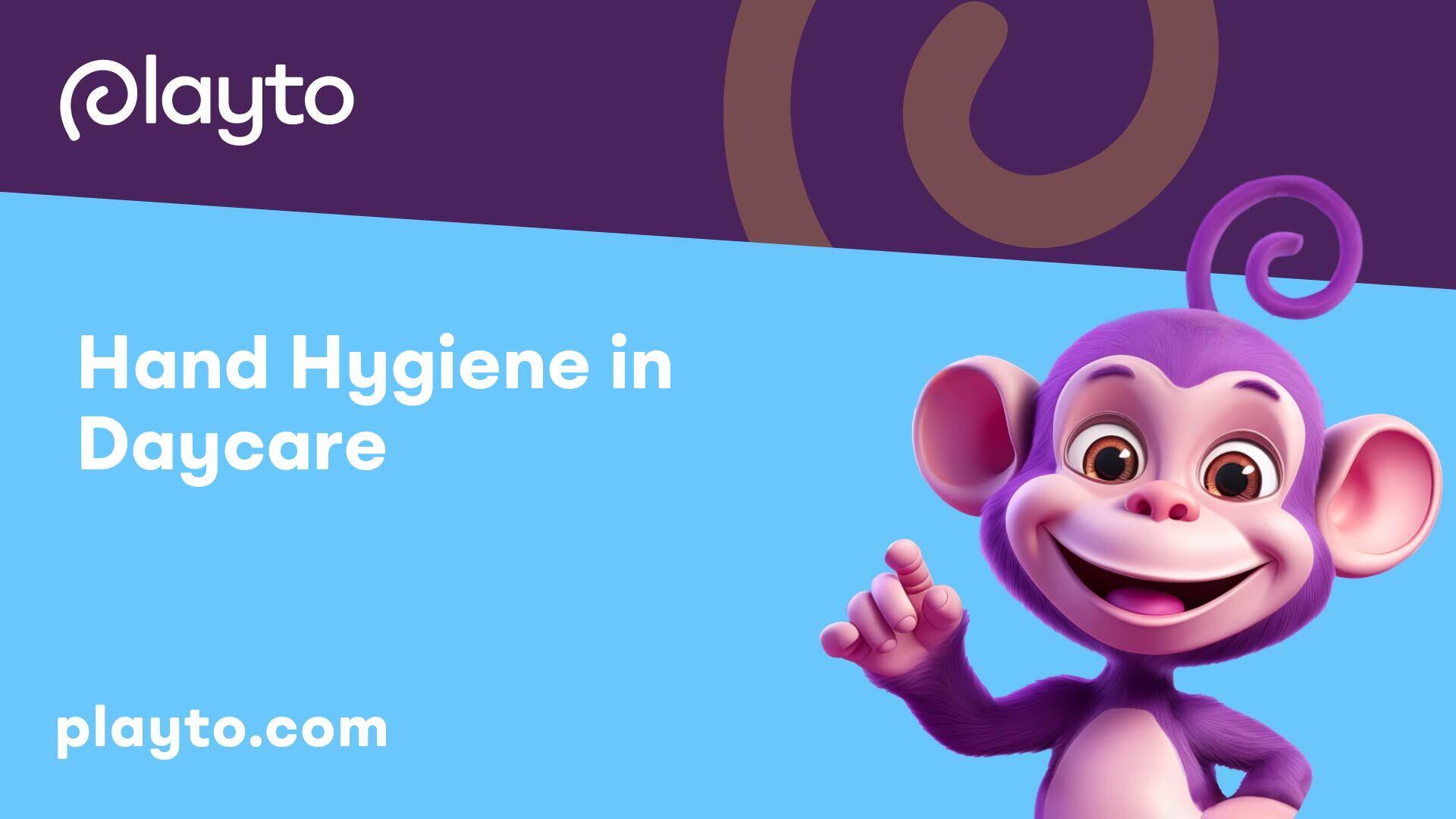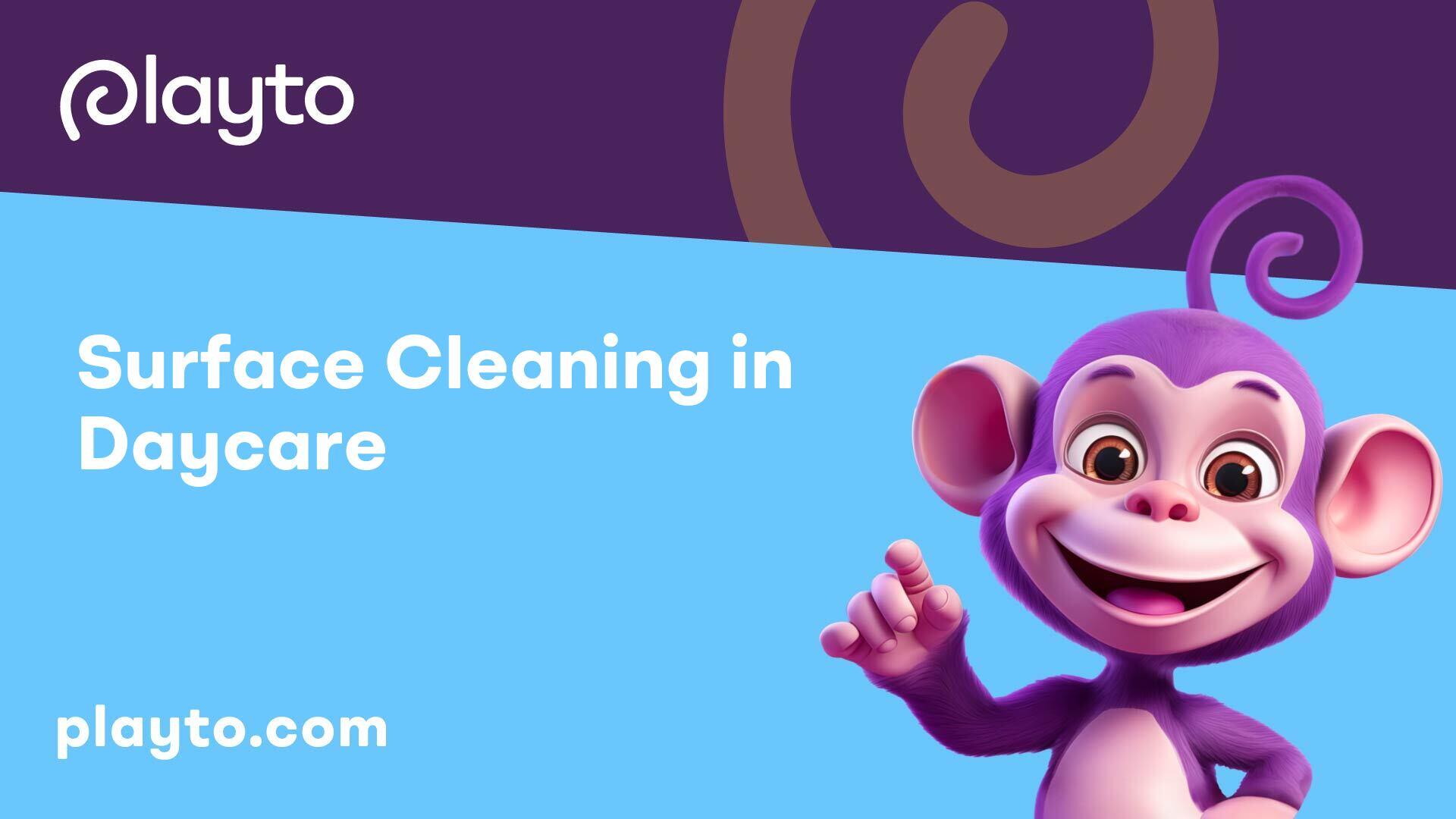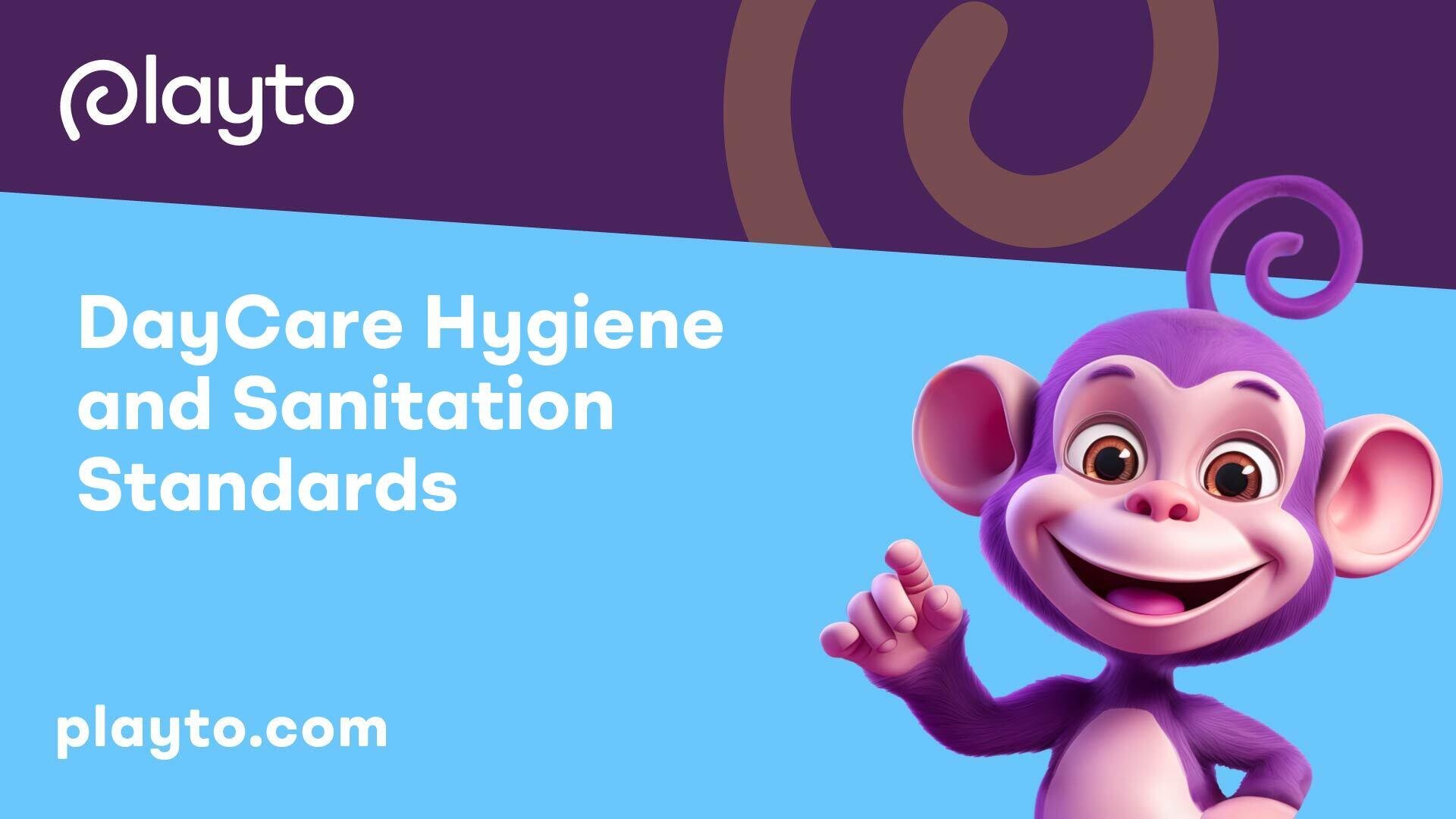
Importance of Daycare Hygiene
Ensuring proper hygiene practices in daycare settings is paramount when it comes to daycare hygiene and sanitation standards. This includes preventing childhood illnesses and promoting health and safety for all children in care.
Preventing Childhood Illnesses
Good hygiene practices in childcare services are essential to minimize the risk of infectious illnesses spreading among children. In daycare environments, infections can spread through physical contact, airborne droplets, and touching surfaces or objects. Children interact with various items like toys, furniture, food, and cutlery within these services, underscoring the importance of proper hygiene to prevent the spread of illnesses.
Promoting Health and Safety
Educators within daycare settings play a significant role in helping children develop good hygiene habits by reinforcing these habits through play and daily routines. By establishing hygiene rules, providing positive feedback, and modeling good hygiene methods, educators promote self-help and self-care skills in children, contributing to their overall health and safety.
Childcare services adhere to a variety of hygiene methods, procedures, and specific daily practices recommended by reputable authorities like the National Health and Medical Research Council (NHMRC) and state health departments to maintain optimal hygiene standards. These practices, in line with the National Quality Standards (NQS) Quality Area 2, aim to safeguard and promote children's health and safety, minimizing risks and protecting children from harm, injury, and infection in daycare settings.
Parents also play a crucial role in supporting good hygiene practices in childcare services by following hygiene procedures during visits, implementing hygiene practices at home with their children, and adhering to the service's policies on managing illnesses and exclusion periods for infectious diseases. By working together with educators and daycare facilities to promote hygiene and sanitation standards, parents contribute to creating a safe and healthy environment for all children in daycare.

Hand Hygiene in Daycare
Ensuring proper hand hygiene practices in daycare settings is essential for maintaining a healthy environment for children. This section focuses on the importance of effective handwashing techniques and the role of hand sanitizers in daycare hygiene.
Effective Handwashing Techniques
Studies have shown that hand hygiene interventions play a crucial role in controlling infectious diseases and reducing the spread of infections in daycare settings [2]. Implementing effective handwashing techniques is one of the most practical and impactful ways to prevent the transmission of germs among children and caregivers.
Key steps for effective handwashing in daycare include:
Proper handwashing should be performed:
Encouraging children to wash their hands frequently and correctly is essential for instilling good hygiene habits from a young age. Visual aids and interactive activities can make learning about handwashing engaging and effective.
Role of Hand Sanitizers
Hand sanitizers are valuable additions to the hand hygiene protocol in daycare centers, especially when soap and water are not readily available. After the handwashing intervention program, sufficient facilities such as hand sanitizers were increased in kindergartens, contributing to a significant improvement in overall hand hygiene environments [2].
When using hand sanitizers in daycare:
Hand sanitizers can be used as a convenient and effective alternative to handwashing in situations where soap and water are unavailable. However, they should not replace regular handwashing practices but rather complement them in maintaining proper hand hygiene standards in daycare settings.
By emphasizing the importance of effective handwashing techniques and incorporating hand sanitizers into the daily routine, daycare centers can create a hygienic environment that promotes the health and well-being of both children and caregivers. Consistent reinforcement of these practices by educators and support from parents are key in establishing a culture of hygiene consciousness in daycare settings.

Surface Cleaning in Daycare
Maintaining high standards of cleanliness in daycare settings is crucial for ensuring the health and safety of children and staff. Proper surface cleaning plays a vital role in reducing the spread of germs and preventing illnesses within the facility.
High-Touch Surfaces to Target
High-touch surfaces, such as tabletops, doorknobs, handles, and toys, are known to harbor germs and bacteria, making them potential hotspots for infections. In daycare settings, where these surfaces are frequently touched by children and caregivers, it is essential to prioritize the cleaning and disinfection of these areas to minimize the risk of germ transmission.
To effectively combat the spread of germs, daycare providers should focus on disinfecting high-touch surfaces multiple times throughout the day, especially in areas that see high traffic. By implementing a routine cleaning schedule that targets these key areas, daycare facilities can create a safer and healthier environment for all occupants.
Proper Sanitization Methods
Proper sanitization methods are essential for maintaining cleanliness and preventing the spread of infections in daycare settings. Regular disinfection of areas like bathrooms and diaper changing tables is paramount to ensure a hygienic environment for children and staff members.
When it comes to cleaning surfaces soiled with body fluids or blood, following appropriate cleaning procedures is crucial. Disinfecting wipes should be used for frequently touched electronic items, while surfaces like toys and furniture should be cleaned with an EPA-registered sanitizing spray to eliminate germs effectively.
To sanitize surfaces or objects after each use, daycare facilities can utilize various methods, including a weakened bleach solution. According to the CDC, preparing a weakened bleach solution involves diluting 1 tablespoon of unscented bleach in a gallon (16 cups) of water in a clean wash basin. Items can be immersed in the solution, ensuring all parts are touched for at least 2 minutes, without the need for rinsing afterward to prevent recontamination.
By adhering to proper sanitization procedures and employing effective cleaning methods, daycare facilities can uphold high standards of hygiene and sanitation, creating a safe and healthy environment for all individuals within the facility. Regular cleaning and disinfection of high-touch surfaces are essential practices that can significantly reduce the risk of infections and promote the overall well-being of children and staff members.
Sanitization Procedures
In daycare settings, maintaining proper sanitization procedures is crucial to ensure a safe and hygienic environment for children. This section focuses on two key aspects of sanitization procedures: using a weakened bleach solution and disinfecting bathroom and diaper areas.
Using a Weakened Bleach Solution
To effectively sanitize surfaces or objects in daycare facilities, a weakened bleach solution is recommended by the CDC. The process begins by preparing a solution of 1 tablespoon of unscented bleach per gallon (16 cups) of water in a clean wash basin. This solution should be used to soak items for at least 2 minutes without rinsing, ensuring all parts are touched for thorough sanitization. The absence of rinsing after the 2-minute period helps prevent recontamination.
Utilizing a weakened bleach solution is a practical and cost-effective method to sanitize various items and surfaces in daycare facilities. By following the proper dilution and soaking procedures, daycare providers can maintain a high level of cleanliness and prevent the spread of germs among children.
Disinfecting Bathroom and Diaper Areas
In childcare facilities, regular disinfection of high-risk areas like bathrooms and diaper changing tables is essential to prevent the spread of infections. According to CDC, using disinfecting wipes for frequently touched surfaces and electronic items is recommended in addition to following proper cleaning procedures for surfaces soiled with body fluids or blood.
When it comes to disinfecting bathroom and diaper areas, daycare staff should adhere to strict cleaning protocols to ensure thorough sanitation. Regular disinfection not only promotes a healthy environment but also instills confidence in parents regarding the cleanliness and safety of the daycare facility.
By implementing robust sanitization procedures, including the use of a weakened bleach solution and prioritizing the disinfection of specific areas like bathrooms and diaper changing stations, daycare providers can create a hygienic space that promotes the well-being of children under their care. Maintaining high standards of cleanliness is paramount in upholding the health and safety of all individuals within the daycare environment.
Educating Children on Hygiene
In a daycare setting, educating children on hygiene practices is essential for instilling lifelong habits that promote health and well-being. Two effective approaches to educate children on hygiene include teaching handwashing through play and utilizing visual aids for learning.
Teaching Handwashing Through Play
Encouraging children to engage in handwashing through play makes the learning process enjoyable and interactive. By incorporating fun activities and games into the handwashing routine, children are more likely to develop a positive attitude towards hygiene practices.
One effective strategy, as suggested by Edutopia, is to designate a staff member or trained volunteer as the daily handwashing overseer in preschool. This individual can supervise and assist children with the handwashing routine, providing a patient and supportive environment for learning. Children respond well to adult guidance and encouragement in adopting proper handwashing techniques.
Another playful approach is to have easily accessible sinks at the children's level in preschool, or provide sturdy step stools for adult-size sinks. This setup allows children to develop gross and adaptive motor skills by engaging in activities like turning faucets on and off, getting soap, and drying their hands independently. These hands-on experiences not only promote hygiene but also enhance children's motor skills development.
Utilizing Visual Aids for Learning
Visual aids play a significant role in helping children understand and remember hygiene practices effectively. Clear visual diagrams depicting the handwashing sequence at the children's eye level by the sink in preschool can guide them through the process step by step. Making soap and paper towels easily accessible reinforces the structure of the handwashing routine and empowers children to follow the steps independently.
Incorporating songs or counting into the handwashing routine can further enhance the learning experience for children. Songs like "Twinkle, Twinkle, Little Star," which takes about 20 seconds to sing, can be a fun way to ensure children wash their hands for the recommended duration. Engaging children in singing during circle time and then independently at the sink not only promotes language and cognitive development but also reinforces proper handwashing habits.
Additionally, using books that focus on germs, handwashing, and healthy habits can be a valuable educational tool in daycare settings. Books like "Germs Are Not for Sharing" by Elizabeth Verdick and "Wash Your Hands" by Margaret McNamara help children understand the importance of hand hygiene in preventing illnesses and staying healthy.
By incorporating these engaging and interactive methods, daycare providers can create a fun and educational environment that encourages children to embrace good hygiene practices from a young age. Education through play and visual aids empowers children to take charge of their own hygiene and promotes a lifetime of health and wellness.
Collaboration for Hygiene
In promoting daycare hygiene and sanitation standards, the collaboration between educators and parents plays a vital role in instilling good hygiene practices in children. Both parties have distinct roles in reinforcing hygiene habits and ensuring a safe and clean environment within the daycare setting.
Educator's Role in Reinforcing Hygiene Habits
Educators within the daycare setting play a crucial role in helping children develop good hygiene habits. They reinforce these habits through various activities, incorporating them into daily routines such as mealtimes, nappy changing, and toileting. By setting hygiene rules, providing positive feedback, and modeling proper hygiene practices, educators promote self-help and self-care skills in children.
Designating a staff member or trained volunteer as the daily handwashing overseer in preschools can effectively supervise and assist children with the handwashing routine. This approach provides a patient framework for children, allowing them to thrive with adult support and encouragement in practicing proper hand hygiene.
Furthermore, ensuring that sinks are easily accessible at children's level or providing sturdy, slip-resistant step stools for adult-size sinks can help children develop gross motor skills and promote adaptive motor skills during handwashing activities. Simple tasks like turning faucets on and off, getting soap, and drying their hands independently contribute to the overall development of children's motor skills.
Parental Support for Hygiene Practices
Parental involvement and support are essential in reinforcing hygiene practices learned at daycare. Parents play a key role in extending the teachings of educators beyond the daycare setting and into the home environment. By actively supporting and reinforcing the importance of hygiene habits taught at daycare, parents create a consistent approach to hygiene education.
Encouraging children to follow hygiene routines, such as handwashing before meals and after using the bathroom, at home helps to solidify these habits. Parents can also engage children in discussions about the significance of hygiene and involve them in household chores that promote cleanliness and organization.
Additionally, utilizing clear visual aids depicting the hand hygiene sequence at children's eye level in the home bathroom can reinforce the structure of the handwashing routine. Making essentials like soap and paper towels easily accessible enhances children's ability to practice proper hygiene independently, fostering their understanding and independence in the process.
By fostering a collaborative approach between educators and parents in reinforcing hygiene habits, children in daycare settings can develop lifelong practices that prioritize health, safety, and cleanliness. This partnership ensures that hygiene standards are consistently upheld both at daycare and in the home environment, promoting a culture of wellness and well-being for children.
References
[2]:
[3]:
[4]:
